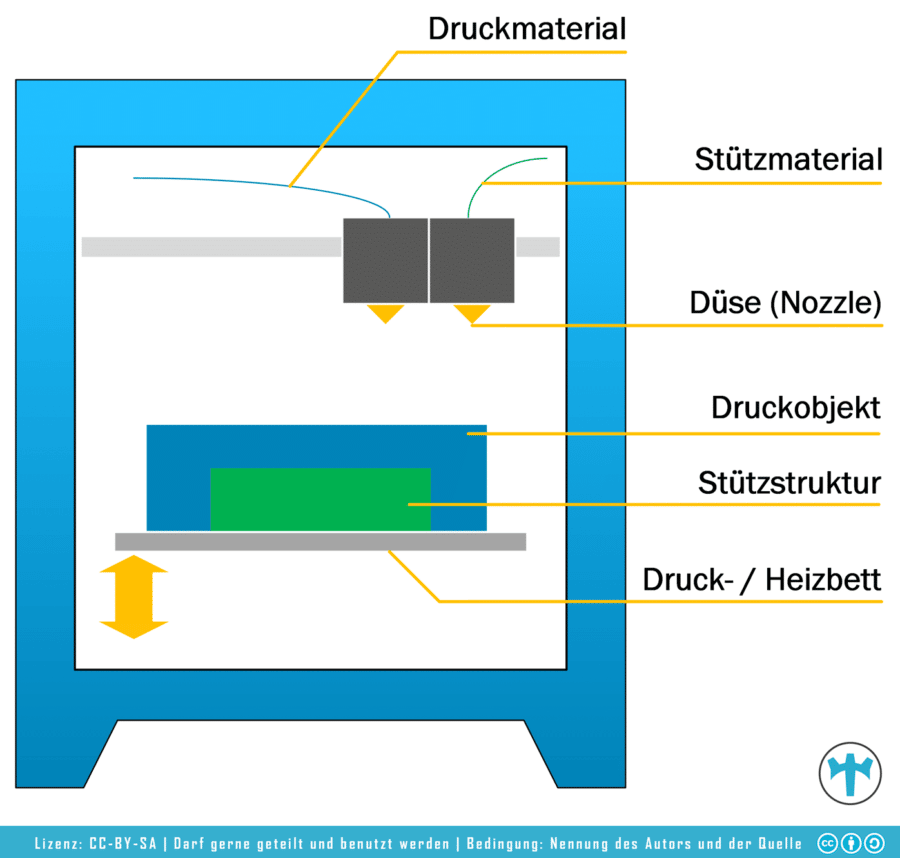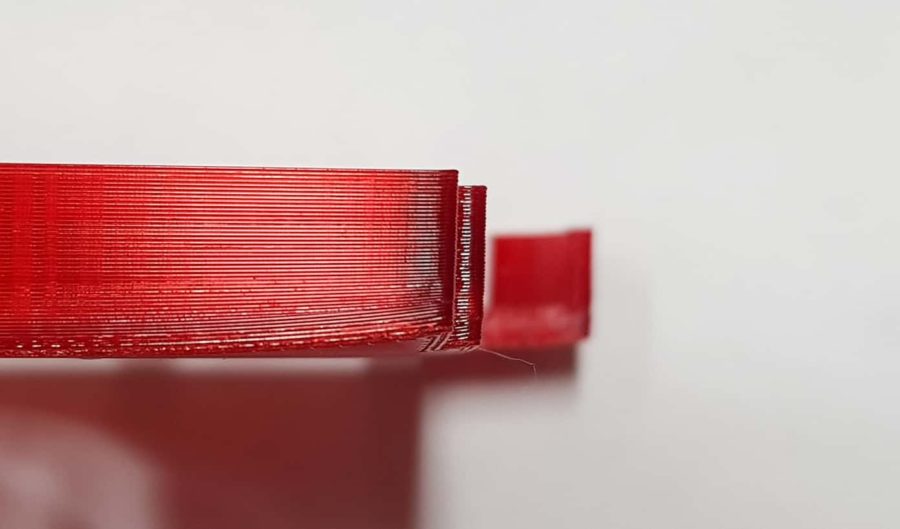Fused Deposition Modeling (FDM) – All about the FDM process
Fused Deposition Modeling (FDM ) is the best known process in the field of additive manufacturing. Learn everything about the FDM process here: Printer setup, material selection, advantages and disadvantages of the technology and much more!
How is an FDM printer constructed?
Before I go into how it works, I'll first introduce you to the setup of a 3D printer using Fused Deposition Modeling.
A 3D printer for the FDM process usually consists of the following components:

➡ Interested in 3D printers? Then visit the following posts:
Fused Deposition Modeling – How does it work?
In fused deposition modeling, the starting material is usually in the form of a plastic wire. This wire is also called filament. Coiled on a spool, the filament is pushed through an extruder (also called cold end) into the so-called hot end (similar to an inkjet print head) until material is extruded from the nozzle.
The molten filament is applied to a usually heated print bed (then called a heatbed). It is very important in the FDM process that the first layer adheres perfectly. If this is not guaranteed, either nothing can be 3D printed. Or, the printed components start to lift off at the corners. This effect is also called warping.
* Stand: 2024-04-21 / Bilder: Amazon API
The filament is applied in layers and cools during printing so that it bonds with the filament of the next layer, but does not completely fuse. In this way, the object is created and detached from the print bed after the printing process is completed. This described way can be different depending on filament, used 3D printer and also heating bed surface.
To minimize the warping risk, I use Pertinax as a permanent pressure plate, for example. You can learn how I use this and how you can use this as well in the post on pertinax.

Which materials can be 3D printed with the FDM process?
The material market in fused deposition modeling is growing and will continue to be graced with new, innovative materials due to the great popularity of the FDM process. The material selection ranges from PLA, ABS, nylon, PETG to exotic solutions with added carbon, copper, wood or even steel.
➡ More info about materials:
Design tips for the FDM process
The topic of construction is too broad to cover here. For this reason, design tips for the FDM process can be found in the following article:
Designing for FDM 3D printing – What to look out for?
Fused Deposition Modeling-The Advantages and Disadvantages
Fused deposition modeling is considered the most cost-effective process and offers rapid prototyping results. For end products, this process is only suitable if appropriate post-processing is carried out to smooth the visible layers. For mechanically stressed objects, it is particularly suitable if, in addition to the material, the direction of pressure and thus the direction of the layers are also included in the consideration.
Advantages of the FDM process
- low cost (3D printer and filament)
- fast procedure
- best known and most used method ➡ Continuous improvement by dealers/manufacturers based on customer opinion, but also by the users themselves in open source communities.
Disadvantages of the FDM process
- The layered structure of the objects does not create smooth surfaces.
- The layers specify in which direction an object can absorb which acting forces. Tensile forces perpendicular to the direction of pressure can help to separate the layers more quickly. When designing objects to be printed by fused deposition modeling, these properties must be included.
- However, depending on the source material used, it is possible to perform post-processing.
